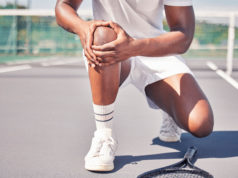By Dr. Mark Kovacs, CTPS, MTPS; CEO, Kovacs Institute; Executive Director International Tennis Performance Association
It is not often that tennis and baseball are used in the same sentence when it comes to training and/or competition. However, since the Atlanta Braves won the 2021 World Series and the 2022 baseball season is about to start (hopefully), I thought it would be valuable to think about some things that you can learn from baseball that are applicable to tennis. There are commonalities between the two sports such as hitting a ball at high speeds, the throwing mechanics of a pitcher compared with the serve motion, and the fast reflexes/reactions required of both activities. I have been fortunate to work in both sports for many years, and I have concluded that tennis players can learn a lot from baseball.
Athletes in both sports suffer from shoulder and elbow injuries that can sometimes linger for months at a time. Over the last few years, baseball has seen a significant decrease in shoulder injuries, but an increase in elbow injuries. In professional baseball, athletes spend more time strengthening their shoulder area, including the rotator cuff. At the recreational level, many of the injuries are due to poor technique, lack of injury prevention work, and overuse. The same way a pitcher has a pitch count, a tennis player should limit their weekly play time in order to allow the body a chance to recover and heal. Increasing range of motion (especially in internal rotation) also has been shown to decrease shoulder injuries in pitchers.
In tennis, the serve goes through a series of eight stages (check out the Kovacs Institute 8 Stage Model For The Serve). A pitcher goes through a similar series of stages when throwing. In both sports, this requires not just learning proper biomechanics, but also controlling the body through each stage of the motion. The pitching motion and a tennis serve begin by shifting back into a loading position. They then rotate and set the arm before accelerating and releasing all the stored energy. Both motions decelerate at the end, but because of the weight and length of a tennis racquet, it takes some stress off the shoulder. The important lesson here is the transfer of weight and rotational control; they are the key to accuracy and placement.
Reaction speed is another key component to tennis and baseball alike. A batter must react to the incoming pitch and make the proper adjustments the same way a tennis player returning a serve must react to the change in speed, bounce, and direction of a tennis ball. Baseball players will tell you that hitting a baseball is the hardest thing to do in sports. At the highest levels of tennis and baseball, the average reaction time for a batter is 0.42 of a second, whereas in tennis the average reaction time is between 0.47 to 0.55 (on a return of a hard serve). Improving anticipation and reflexes to increase reaction time will help your return-of-serve reaction speed.
Hand-eye coordination is extremely important in helping the brain process all incoming information. The faster one reacts, the easier it becomes to return the incoming serve or the pitch. Reflex training with a variety of balls, light systems, and starting positions helps train the body and the mind to always be ready during training or competition. A baseball player reacts to the ball coming out of the pitcher’s hand. In tennis, many players react to the signs/tells of the player serving rather than paying attention to the ball. This causes a delay in reaching the next ball and places the individual out of position for the next shot. By training your reflexes and anticipation, you will reduce the number of times you are caught out of position or setting up for a ball.
The next time you watch a baseball game, try to watch the pitcher and the batter, and try to incorporate some of these aspects into your training and preparation for tennis.




